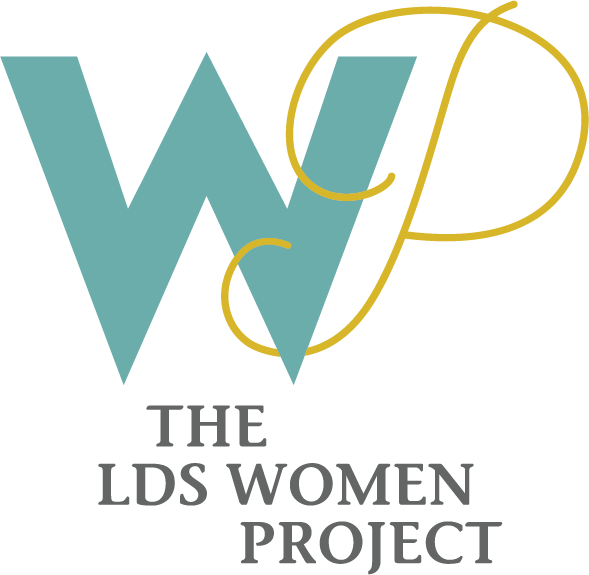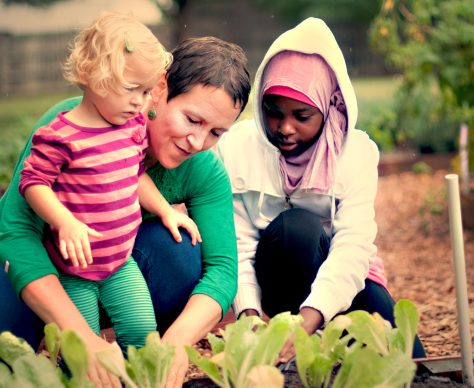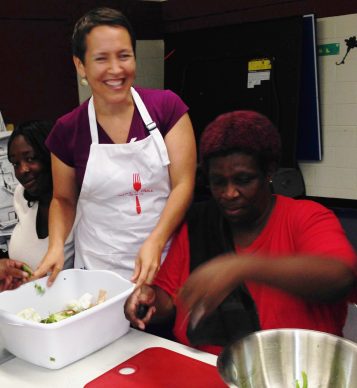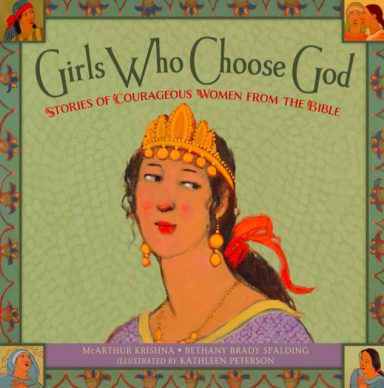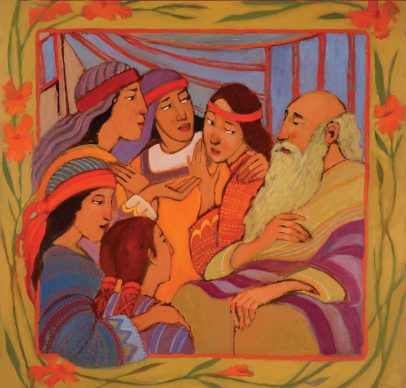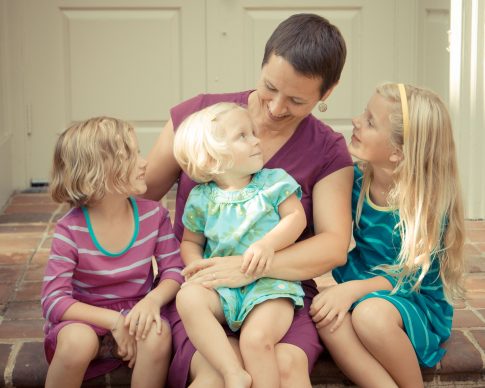Bethany Brady Spalding takes her knack for dissatisfaction and turns it into life-giving action. Whether she’s planting gardens for at-risk children, directing community health programs, or sharing scripture stories with her own daughters, Bethany tries to build positivity and partnership. Bethany is a co-author of the book, Girls Who Choose God: Stories of Courageous Women from the Bible. She believes that telling women’s stories is vital for our spiritual health.
You’ve worked in the slums of India, created programs to improve health and education in the USA and South Africa, written a children’s book about courageous women. What’s the link between these things?
There are so many things I don’t like about the way the world is: there is too much conflict and violence; there are too many girls that don’t get to go to school; there are too many families that don’t have access to nourishing food; and on and on and on. I’ve always been good (maybe too good) at criticizing things I don’t like. I’m quite a skilled complainer.
But I’ve realized along life’s journey that too much criticism and complaining is soul-crushing. And it’s lousy being stuck in an angry, resentful, cynical place. So instead, I’ve tried to use my knack for criticism and complaining as a springboard to action. It’s easy to complain; it is much more challenging—but also more life-giving—to do something to solve problems. Using creativity and compassion, I’ve had a lot of fun trying to change the world around me into a better place. I like to think of myself as a change-maker.
With all that you want to change, how do you decide where to focus your “change-maker” energies?
I feel really strongly about working in whatever community I live in. If that’s Mumbai [India], then I want to engage there, and if it’s Richmond [Virginia], I want to be here. I want to be on the ground, making an impact where I live and where I’m invested. I used to think of myself as loving international work, but as I’ve gotten older I’ve started to think that the biggest impact we can make is where we are. I love community work and community development. Wherever I am is where I want to focus my efforts.
Let’s talk about the two big issues you’ve been working on lately—first, nutrition.
When we moved here to Richmond two years ago, we chose to live near a very diverse school with over 40 countries represented. Our oldest child started kindergarten and I quickly noticed that good nutrition is such a challenging issue. Many students don’t have access to healthy food at home and the school was serving exorbitant amounts of highly processed food. I was troubled not only by the impact it had on individual children’s health, but also how it impacted the collective learning environment. How could our children focus and learn and thrive while eating so much junk? We’d never tolerate using inferior materials to construct a building, yet we tolerate building children with junk food.
But instead of just complaining and making fast enemies with the school lunch ladies, the principal, and the candy-loving teachers, I tried a creative approach. I made a presentation to the PTA board about starting a wellness movement at our school called “Growing Minds,” and it became the school theme. We’ve built an enormous school garden, a farmer teaches bi-weekly food and nutrition classes to all 600 students, and we’ve made huge progress on getting our students and teachers to think about healthy food. It has been fun to see the shift in the school—towards wellness and nutrition.
I felt so alive doing this volunteer work at our family’s school and then an opportunity presented itself for me to do similar work professionally. I was asked to lead a regional coalition of community partners working together to address childhood obesity in our area. Richmond has very high levels of poverty and malnutrition, and some of the highest obesity rates in the nation. In the past two years, we have started programs in schools, community centers, churches, public housing sites, health clinics, grocery stores, farmers markets, day care centers, and other venues to improve access to and enjoyment of healthy food.
A couple of the programs that I run are called Food Explorers and the Prescription Produce Program. Food Explorers is a five-week course that inspires kids ages 10 to 15 to become more savvy consumers of food. We get them investigating important food issues, like the impact of sugar-sweetened beverages and fast food marketing, and we teach them how to make easy, nourishing snacks and meals. We partner with organizations like the YMCA and Boys & Girls Clubs to deliver the program.
The Prescription Produce Program is based in public housing sites around the city and targets families at risk for diet-related diseases. We partner with health clinics to help patients understand food as medicine. A nurse practitioner writes participants a prescription for fresh produce. A local farm sets up a farm stall right outside of the clinic and “fills the prescription.” We do demonstrations and cooking classes to teach families culturally acceptable ways to use the produce. After twelve weeks of consuming more fruits and vegetables, families often see a significant improvement in their health.
As a Mormon, food is deeply spiritual to me—it links us to the earth, to each other, to our heritage, and to our faith. It is the building blocks of our bodies; it sustains life. So much of our happiness is tied up in food, and it significantly impacts our physical, emotional, and spiritual health. Christ fed His followers. I believe that empowering families to eat more nourishing food will feed a life more full of joy.
It seems like partnerships are so critical to success here. What is your approach to building partnerships?
I studied public health, which at its core is identifying problems of well-being and bringing together partners to address those problems. I feel passionate about building partnerships. We can’t create change on our own. Our best work is when we partner with like-minded organizations and people to join forces and work together. Our coalition in Richmond includes grocery stores, farmers, our local food bank, school districts, universities, government agencies, nonprofit organizations, health clinics, and hospital systems. We bring them all to the table to come up with initiatives to improve health and nutrition.
Tell us about another of your “change-maker” efforts: the book you just co-wrote, Girls Who Choose God.
One of my favorite parts of Mormonism is its rich feminine theology: an understanding of a Heavenly Mother; the knowledge that Eve’s choice in the garden of Eden was deliberate and courageous; the many ways in which Christ championed and elevated women. But as a mother to three Primary-age girls, it has been difficult that in the Church—my faith community wherever I have lived—there are so few stories, songs, and role-plays about women and girls. My daughters, as young as they are, feel that acutely.
My oldest daughter, Simone, was only three years old when she asked the question while reading scripture stories, “But mom, where are the girls?” It struck me that she was already noticing that she wasn’t being represented in those stories. I told my friend McArthur about this, and we started brainstorming about a book highlighting bold women from the scriptures and Church history. It’s another example of how partnership works, because I was raising young girls but McArthur is such a clever storyteller!
It has been a grand journey creating the book and watching it come to life. I have been inspired by Deborah the prophetess, Miriam the brave sister, and the Generous Widow. I’m excited to read these stories to my girls, but even more excited to teach them that they too can see a problem and do something to solve it.
My absolute favorite story in the book—which I had never heard before writing it—is Mahlah and her sisters. These five young girls find themselves affected by an unjust law and approach Moses about the need to change it. God tells Moses that the girls are right and their efforts are rewarded with a new law that is fair to women and girls.
In the spirit of Mahlah and her sisters, I’ve started sharing the book with Primary presidents and Bishops, encouraging them to use more stories about women in our Church services. I believe that telling more women’s stories is imperative for our collective spiritual health.
We are elated that the Church has bought much of the artwork, and it is currently on display in the Conference Center. We hope that the book and its beautiful art will be enjoyed by many girls and boys, both young and old, and that we will all realize that there are a plethora of courageous, powerful, deeply spiritual, heroic women in our faith that we should celebrate and learn from.
I have three goals for the book, which I admit are a bit of a stretch. But that’s how change-making begins, right? First, that the book will provide strong role models to girls and illustrate that they can be devoted mothers as well as judges, generals, social justice advocates, and many other roles to be a force for good. The second goal is that girls and boys will consider themselves to be spiritual equals, which will lead to more equal partnerships between men and women. The third is that we as a people will grow more comfortable speaking about bold, powerful, spiritual women. And that will eventually lead us to be more comfortable discussing our ultimate feminine role model, Heavenly Mother.
It’s impressive how you approached issues from a positive angle.
If you really want to make change, you don’t want to alienate people. I try to be inclusive, find common ground, and recognize the contributions that people can make. Change is slow that way, but I think it’s deeper and more lasting when you approach it in a positive, inclusive, hopeful way.
You’ve said that the changes you work for are very important, but they’re not an endpoint.
My husband, Andy, and I spend a lot of time talking to our girls about complicated social issues. Despite their very young ages, we have vibrant dinner discussions about politics, ethics, and current affairs. We debate problems and brainstorm solutions to them. We remind them that Christ was a change-maker and encourage them to be anxiously engaged in a good cause.
Most of all, I want my daughters to see that they too can be change-makers. That they don’t have to accept the world the way it is—that they are powerful, and that their concerns and ideas matter. That is the legacy I want to leave.
At A Glance
Bethany Brady Spalding
 Location: Richmond, Virginia, USA
Location: Richmond, Virginia, USA
Age: 40
Marital status: Married 9 years
Children: Three girls (ages 7, 5, and 3)
Occupation: Lover, mother, community organizer, and public health advocate
Schools Attended: Brigham Young University, University of London
Languages Spoken at Home: English
Favorite Hymns: “Know This, That Every Soul is Free” and “On This Day of Joy and Gladness”
On The Web: Girls Who Choose God and Fit4Kids
Interview by Barbara Christiansen. Photos used with permission.
At A Glance
